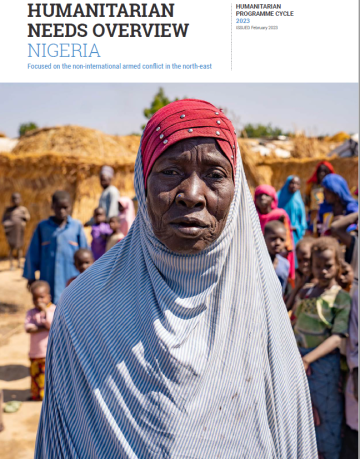
In 2023, the Camp Coordination and Camp Management (CCCM) Sector will provide temporary settlement solutions to 1,154,840 internally displaced persons (IDPs) and 237,976 returnees across the BAY states. In 2022, the sector had assessed that nearly 2.25 million IDPs in 236 areas were in critical need of targeted CCCM services. In 2023, the sector will continue to coordinate and manage 71 formal camps, 136 camp-like settings or informal camps, 6 reception centres and 23 communities hosting IDPs or returnees. Over half (54 per cent) of the IDP population across the BAY states will continue to be served – but this still leaves 46 per cent of IDPs and other population groups without much-needed assistance.
Across the BAY states 42.6 per cent of IDPs (857,820) live in 276 IDP sites (camps, collective centres and camp-like settings) and around 57 per cent (1,154,840) are taking shelter across 1,308 host community locations, according to the IOM’s DTM Round 41. In Borno State, an estimated 857,820 IDPs are living in camps and camp-like settings. Over 17.4 per cent of IDPs in Adamawa State, most of whom are from the state’s northern LGAs or from neighbouring Borno State, are living in host communities; 71 per cent are living in camps and camp-like settings. Yobe has some 17,602 (11.6 per cent) IDPs living in camps and camplike settings.
As in 2022, major gaps in CCCM structures in formal and informal displacement sites continue to impact the living standards of all four population groups in the BAY states.
The most vulnerable people within the four population groups will continue to be prioritized, making up 80 per cent of the IDP and returnee caseload. This includes women and children, including female- and/ or child-headed households, the elderly and persons with disabilities. In 2023, people with specific needs remain particularly affected by the crisis and have limited access to (specialized) services. Some 55.3 per cent (1,575,741) of the IDP population are women and children, 4 per cent (84,706) elderly and 23 per cent (463,606) children under the age of five.

